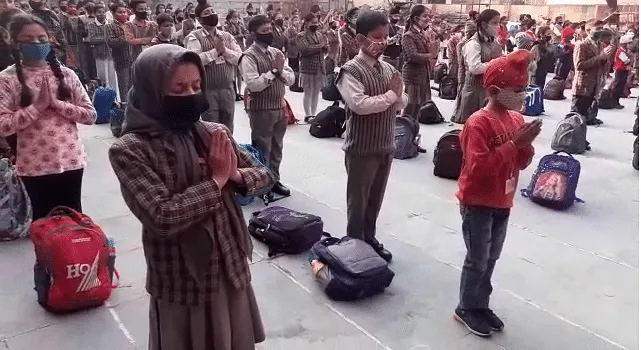BY JANIB WANI and SHAMEEM AHAMAD GANAYEE
Marriage has continued to be an integral feature of every known society. It serves as the cornerstone of the institution of the family.
As a proper course of action leads to a proper outcome: issues in marriage can prove harmful to society at a collective level. Mass marriages are currently being celebrated with fervor.
The compliments are flowing from everywhere. My peace of writing is not pleading against this very phenomenon – what I argue is that we need to look on-screen and off-screen as Peter Berger rightly stated, ‘things are not what they seem”, and contemplating things sociologically means recognising the aspect which might be shadowed by a group’s impact and experiences on an individual.
The institution of marriage has been influenced by the socio-economic and cultural location of a particular society. Marriage celebrations are varied in different groups due to varying customs, traditions, religions, and economic circumstances.
However, the present people’s multifaceted growth and moral emphasis on logic, effectiveness, and efficiency gave birth to the paradox of choices. Thereby creating a situation of the interface between religion and capital; however, the trend showed capital emerged as the preferred one.
Arguing in Kashmir context: besides dowry and extravaganza, the traditional wazwan has become expensive and unaffordable for many. Marriage has emerged from a universal rite of passage into a conspicuous celebration of classes.
The cost of marrying is unaffordable. Our marriages have grown porous through the conspicuous celebration that leads to the alternatives like mass marriages. Against this backdrop, emerges a question: Are mass marriages an alternative or a dissent to individual marriages, or is it an option to our rigid class structure celebrations? The answer lies with everyone that needs to be decoded at the individual level.
As we know mass marriages are a new development in our social fabric; the newness makes it a social current that is yet to be a social fact. Because of this, the procedure is complicated, and to get to the bottom of the problem, we must think out of the box.
Thinking about individual marriage; thinking affordability, and the social and cultural ramifications we come up with something appalling. Mass marriage alone is a sign that there is a problem with the socio-economic and cultural apparatus of routine marriage.
The problem is structural, or, to put it simply, the socio-economic component of the routine marriage. The mismatching game, age, caste, class, power structure, inclusion in decision-making (gender component), and financial paradox make individual marriage a big game for the family as a whole.
The associated constructed accessories make it more unaffordable to the marginalised. Unemployment, poverty, new trends, demands, stigma, societal constraints, and cultural expectations make mass marriage as a complimentary choice.
Once what was known as the economic burden of individual marriages is now embedded in our social structures in such a way, giving bragging rights to the family as a whole. The social and economic expenses of marriage are making marriage an elite fad.
The recent study conducted by the Ministry of Statistics and Programme Implementation shows that J&K has a higher percentage, 29.1%, of young people (aged up to 29 years) who are not married than the national average. Here, mass weddings aim to reveal and show society that there is a problem with what you think is right.
We as a whole are known to take things for granted, what we did historically. Revisiting the socio-economic and cultural aspects of marriage is a way forward.
As we know mass marriages are preferred for socio-economic and cultural reasons, however, it has its ambiguities as well. From both alternative and reaction perspectives, mass marriages raise certain questions, which need to be addressed. We just need to make our marriages affordable.
Disclaimer: The views and opinions expressed in this article are the personal opinions of the author.
The facts, analysis, assumptions and perspective appearing in the article do not reflect the views of GK.






